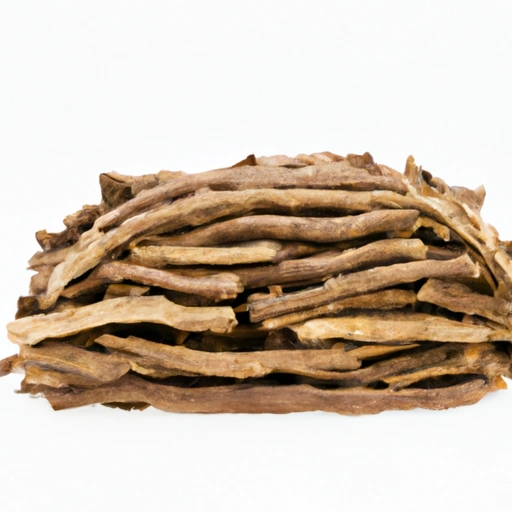Kudzu
Description

Kudzu, also known as Japanese arrowroot, is a climbing, coiling, and trailing vine native to East Asia and Southeast Asia. Known scientifically as Pueraria montana, this plant's starchy root is commonly processed into a fine powder and used as a food ingredient. Kudzu powder is revered for its culinary versatility with its neutral flavor and ability to thicken soups, sauces, and desserts. This ingredient is becoming increasingly popular in various cuisines around the world, offering a gluten-free alternative to thickeners like cornstarch and flour.
Common uses
In culinary contexts, kudzu is primarily used as a thickening agent and gelling ingredient. It is often utilized in the preparation of Asian desserts, sauces, and noodle dishes. Beyond cooking, kudzu finds applications in traditional medicine, where it is employed for its potential to alleviate symptoms of alcoholism, menopause, diabetes, and cardiovascular diseases among others.
Nutritional value
Calories
Per 100 grams, kudzu contains approximately 200 calories.
Protein
Kudzu provides around 0.2 grams of protein per 100 grams.
Fat
It is low in fat, with less than 0.1 grams per 100 grams.
Carbohydrates
Kudzu is rich in carbohydrates, offering about 94.8 grams per 100 grams.
Vitamins
While not a significant source of vitamins, kudzu contains trace amounts of B-vitamins.
Minerals
Kudzu is a good source of minerals such as calcium, magnesium, and iron.
Health benefits
Kudzu is purported to have several health benefits, including aiding in digestion, reducing symptoms of hangovers, and possibly helping in the management of diabetes. It is also thought to have anti-inflammatory properties and may support cardiovascular health.
Potential risks
Though generally considered safe when used as a food ingredient, kudzu may interact with certain medications and health conditions. It is important to consult with a healthcare provider before using kudzu for medicinal purposes. Overconsumption may lead to digestive issues or allergic reactions in some individuals.
Common recipes
Kudzu is commonly used in recipes such as Japanese kuzumochi, kuzuyu (a sweetened tea), and various thickened sauces. It also appears in Chinese and Korean culinary traditions.
Cooking methods
To use kudzu as a thickener, it is typically dissolved in a small amount of cool water before being added to the recipe. It can thicken at a lower temperature than many other starches, making it a versatile ingredient in both hot and cold dishes.
Pairing with other ingredients
Kudzu pairs well with sweet and savory flavors alike. It complements ingredients like berries, citrus fruits, and sweeteners in desserts, while also enhancing the texture and consistency of savory broths, stews, and gravies.
Summary
Kudzu is a plant-based ingredient known for its thickening properties in cooking and its potential health benefits. While its use in food recipes is celebrated for its versatility and gluten-free nature, it is also recognized in traditional medicine for its therapeutic properties. As with any ingredient, moderation and proper usage are key to enjoying kudzu's benefits while minimizing any risks.